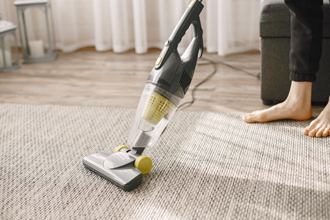Trade Underlay Clearance
When it comes to flooring, most of us have it all wrong. Remember, the floor's lifespan is primarily decided on the quality of materials and manufacturing. However, that's not exactly precise. While these factors have a significant effect, especially when it comes to longevity and aesthetics, another factor underlay clearance focuses on is the ridiculous cost. Besides, the subfloor happens to play a leading role in it.
Basically, underlays are a thin material that's jam packed between other materials. Our trade underlay clearance team offers it for two different industries, i.e., roofing and flooring. Flooring plays a vital role when it comes to supporting furniture. These are generally made with a thin layer of fibre, felt, rubber or foam.
High-quality flooring underlays from Carpet Trader App helps cushion, sound absorption, insulation and reduce wear with your flooring. Laminate or engineered wood flooring provides a "vapour barrier" to prevent moisture from coming through and damaging the floor.
How Our Flooring Helps You?
Sound Reduction
- Underlayment allows you to block sound from transferring from one place to another. Underlay clearance builds products with recycled fibres, absorbing sound and keeping it from travelling to other rooms. It makes click-together floating floors sound solid underfoot.
Compression Resistance
- Consistent traffic leads to dented areas of flooring. Dense recycled fibre underlayment supports the click-together mechanism and upholds supportive configuration under constant traffic of overlaying floor.
Moisture Protection
- Specific underlayment comes with built-in vapour barriers. It helps block moisture from getting to the floor. At Carpet Trader App, we offer premium quality underlays at the best prices. Moreover, concrete subfloors are notorious for emitting moisture. Besides, this causes the floor to contact water and chemicals from concrete. Our trade underlay clearance offers the right solution for all these issues.
Block out some of the cold
- In the UK, cold weather is a non-negotiable option. It's merely one of the tradeoffs you get for having four full seasons. Unfortunately, that's not at all fun. Besides, it'll leave your heating bill sky high in a heartbeat. Sadly, you'll be forced to dole out extra cash every month and ear slippers 24/7.
- We can assist with the latter half of the problem with high-quality underlay. The addition of high-quality padding beneath provides an extra layer of protection between you and the outside. Besides, the insulation is more than what you can imagine. Also, the cold air swirling around there beyond the door in them is kept precisely where it belongs, and the warmth from your heater is kept safely inside.
Why Us
- Carpet Trader App is a leading service provider. We have the best solutions for all types of flooring requirements. We offer sales and installation services for all types of floorings. Having been in the market for a long time, we connect you with the best experts. With our underlay clearance team, you can get the best results. Dial us for any consultation, and we'll help you reach out to the best quality service.
Download Carpet Trader App: https://carpettrader.co.uk/qrcode
FREQUENTLY ASKED QUESTIONS
1. Is the underlayment waterproof?
Answer: Asphalt-saturated felt synthetic underlayments are water-resistant. Rubberized asphalt underlayment comes with waterproofing features.
2. What type of flooring does not require underlayment?
Answer: You'll need to use one in every other application covering hardwood floors, vinyl flooring that isn't cushioned, and concrete floors. Also, you may not require an underlayment if the vinyl flooring has underlayment installed. Also, you may need a vapor barrier.
3. Can I put laminate flooring directly on concrete?
Answer: Underlay clearance can be used immediately after installation. Laminate flooring is installed over concrete, wood, carpet subfloor, or other surfaces.
